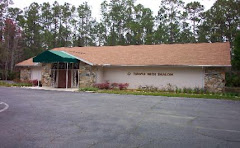











There is no set liturgy for the modern Tu Bishvat seder such as that created at Temple Beth Shalom during the celebration of the New Year for Trees. This is a ritual that is still in flux. The ritual chosen by Education Director Robyn Shapiro focuses on ecology, Israel, family activities. The texts for the seder may quote from different Jewish books in addition to the Bible. The common elements are the drinking of four cups of wine and the eating of different fruits. While these customs go back to the mystical Tu Bishvat seder, the elements have been interpreted differently in the Temple Beth Shalom celebrations for teens, for middle schoolers and for primary students.
The seder presented was developed by the staff of Babaganooz, a newspaper magazine for young Jewish students, that is a model of a modern liberal seder, and different communities, especially traditionalist ones, use alternate versions. For example, other sedarim (the plural of seder) include the Shehecheyanu, a blessing that thanks God for the ability to celebrate the joyous occasion. This blessing would be done when eating a new fruit of the season. The Shehecheyanu at the beginning of the seder would link the ceremony to the kabbalist seder and its message of rebirth and time change. One could add a concluding reading, blessing, or a portion of the Hallel (Psalms of praise). Between the different sections of the seder, it is possible to include readings associated with Israel, fruit, and trees from both traditional and modern sources. Many sedarim include songs associated with these topics.
The table was set up as for Passover: white or other nice tablecloth, good dishes, flowers, wine, and juice. There is no requirement to light candles, but scented candles add a nice touch and a festive glow. One person led the seder, reciting each reading and making the blessings, while everyone took turns reading the interpretations. The directions concerning which fruit to locate and the mix of the wines were read aloud. As each piece of fruit and each cup of wine is being considered and blessed, that object is held by the reader. After each blessing, the participants tasted the fruit or sipped the wine

No comments:
Post a Comment